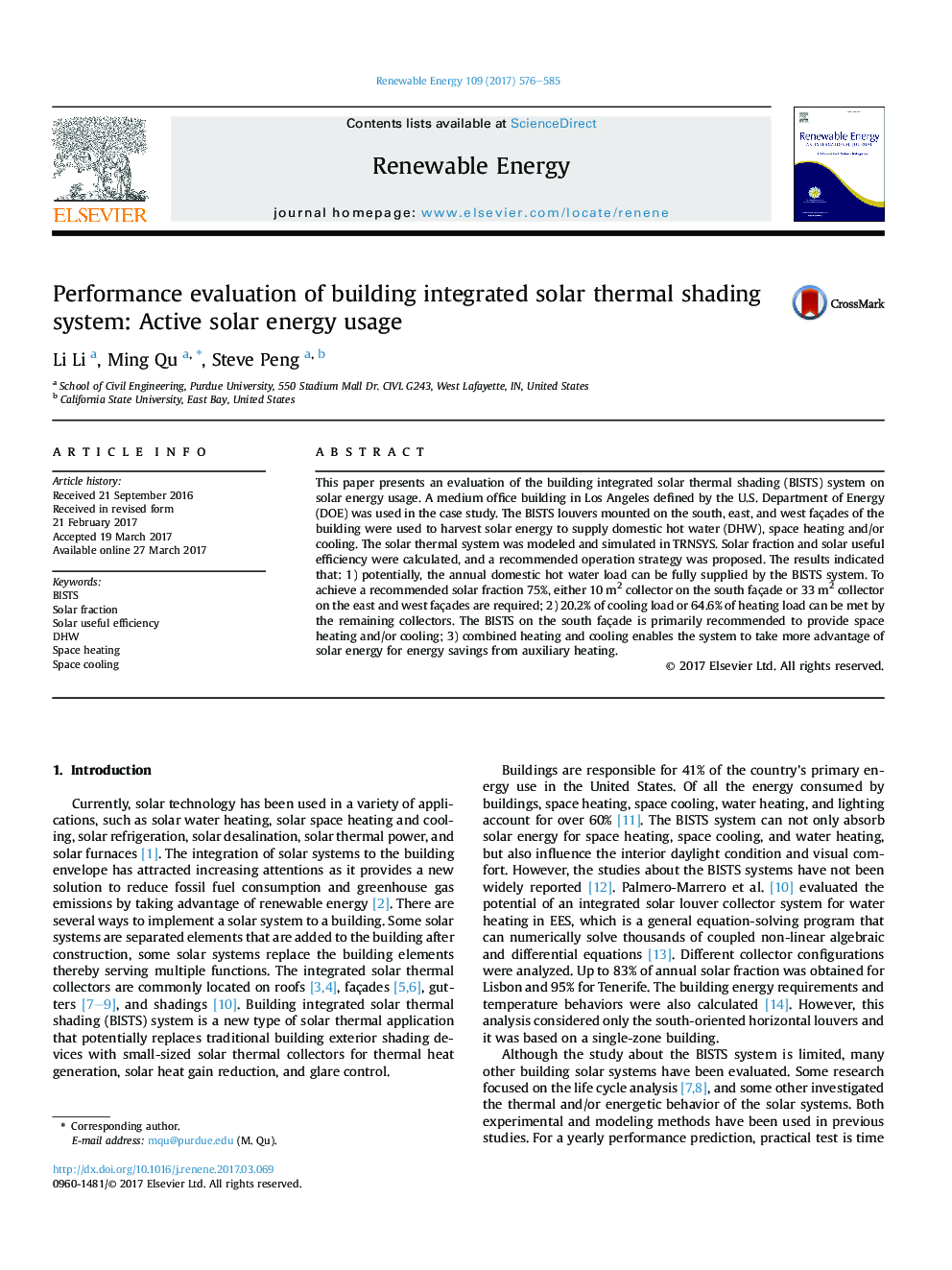| Article ID | Journal | Published Year | Pages | File Type |
|---|---|---|---|---|
| 4926679 | Renewable Energy | 2017 | 10 Pages |
Abstract
This paper presents an evaluation of the building integrated solar thermal shading (BISTS) system on solar energy usage. A medium office building in Los Angeles defined by the U.S. Department of Energy (DOE) was used in the case study. The BISTS louvers mounted on the south, east, and west façades of the building were used to harvest solar energy to supply domestic hot water (DHW), space heating and/or cooling. The solar thermal system was modeled and simulated in TRNSYS. Solar fraction and solar useful efficiency were calculated, and a recommended operation strategy was proposed. The results indicated that: 1) potentially, the annual domestic hot water load can be fully supplied by the BISTS system. To achieve a recommended solar fraction 75%, either 10Â m2 collector on the south façade or 33Â m2 collector on the east and west façades are required; 2) 20.2% of cooling load or 64.6% of heating load can be met by the remaining collectors. The BISTS on the south façade is primarily recommended to provide space heating and/or cooling; 3) combined heating and cooling enables the system to take more advantage of solar energy for energy savings from auxiliary heating.
Related Topics
Physical Sciences and Engineering
Energy
Renewable Energy, Sustainability and the Environment
Authors
Li Li, Ming Qu, Steve Peng,
